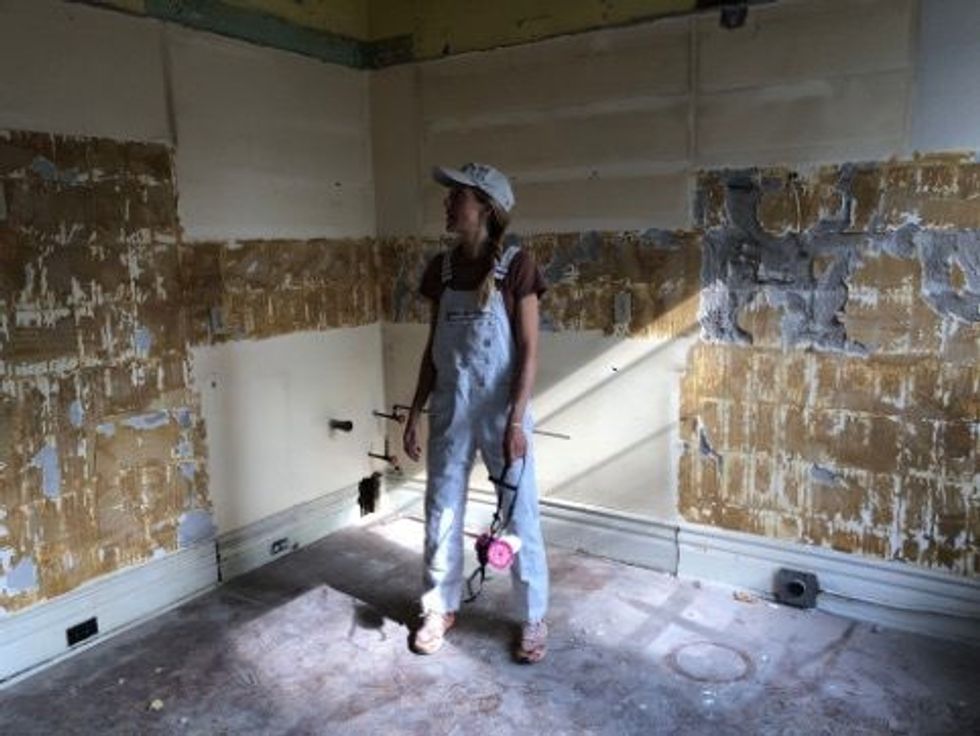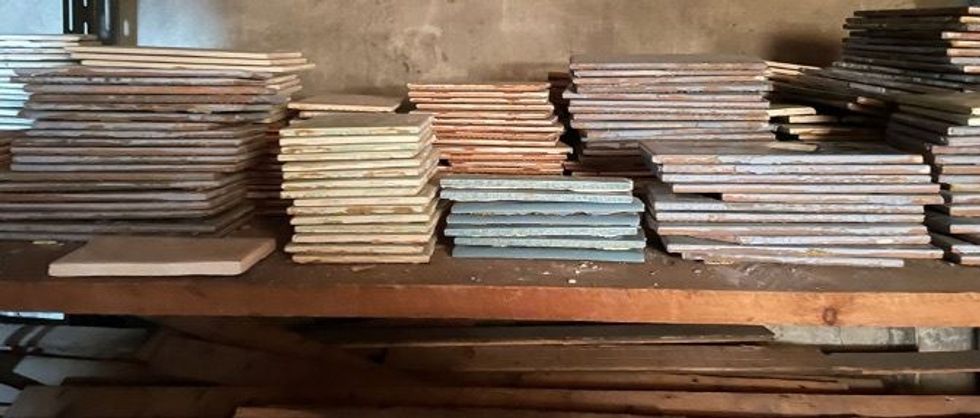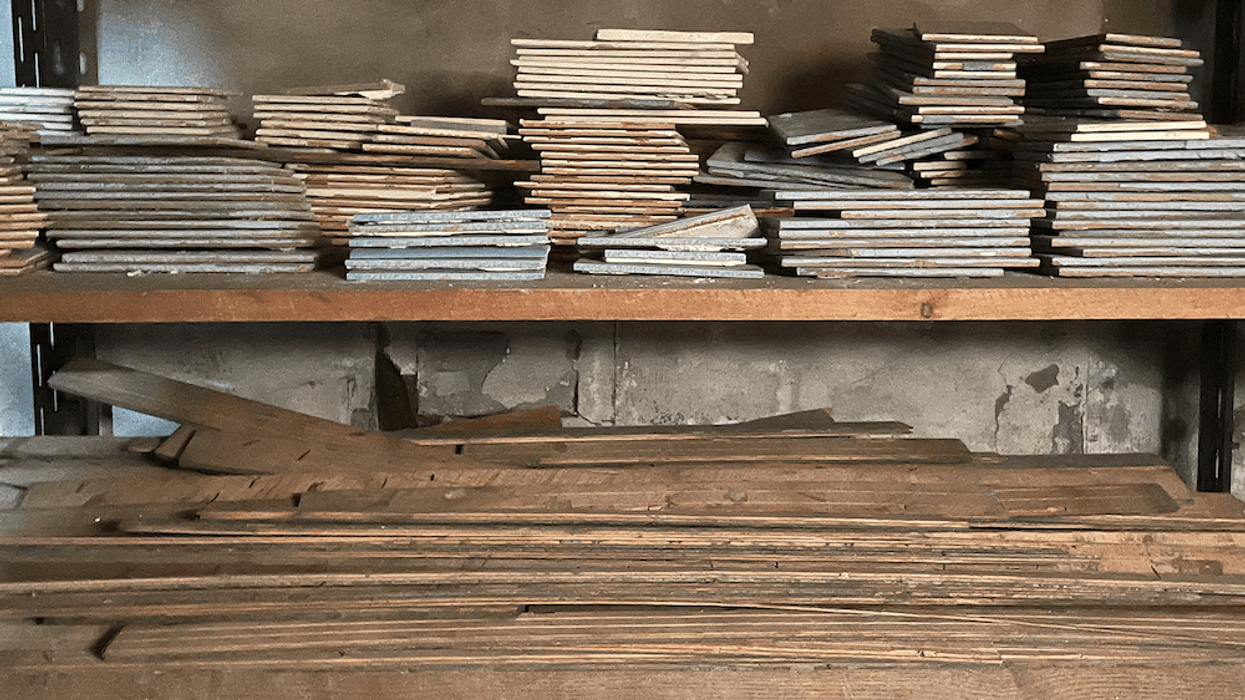Anyone who lives in Toronto knows that the city is in a constant state of deconstruction, with virtually any street seeing a major renovation project on any given day.
It's not just noise and congestion that’s problematic with this reality. Construction and demolition waste account for a staggering 40% of today’s landfills, and experts estimate that Ontario will exceed landfill capacity by 2032.
A Toronto-based company is helping to reverse this with an innovative approach to renovations: deconstruction. Offering a sustainable alternative to traditional demolition, Ouroboros Deconstruction places sustainability at its centre by helping close the loop on the consumption of building materials through deconstruction, a growing field in the circular economy.
“Simply, deconstruction can be envisioned as construction in reverse,” explains Ouroboros Deconstruction founder Meredith Moore. “The last things to go in during construction, light fixtures, doors, trim, etc. are usually the first thing to come out in a deconstruction. Ouroboros takes as much pride and care removing the materials from the home as the initial trade did upon installation, so we are able to preserve them to be reused as opposed to being dumped as trash.”
An average deconstruction project can divert over 45 tonnes of reusable materials from landfills while salvaging irreplaceable old-growth lumber and architectural details. In addition to keeping construction waste out of landfills, the practice significantly reduces the incidence of construction-generated airborne pollutants and dust.

Ouroboros is the culmination of Moore's years-long passion for adaptive reuse and sustainability and first-hand experience within the spheres of architecture, design, construction, and demolition. Recognizing the underutilization and lack of appreciation for existing materials coupled with contemporary society’s throw-away culture, Moore realized that a shift in perspective was desperately overdue. She has since made it her mission, both privately and professionally, to help people better understand just how much high-quality, salvageable material already exists, and the value in its reuse.
Since its August 2022 launch, Ouroboros already has numerous deconstruction projects under their tool belts. Moore says that the company’s goal is to make deconstruction more cost-effective and accessible so that it becomes more widely adopted.
“I have an alternate perception of what others consider waste,” Moore tells STOREYS. “Whether it’s an empty frame on the street or a dumpster full of wood building materials, where most people see trash, I see history and future opportunity. Ouroboros was developed out of a need to find purpose for the waste our industry produces. With a career in interior design and real estate development, I was all too familiar with the amount of material that goes into a bin during demo and renovation projects. Once you start taking note of dumpsters, it’s hard not to notice one on each street. The Ouroboros is a symbol of destruction and re-creation. It is a regenerative cycle and that is what we hope to provide with our company.” Moore says that materials are used, removed, and repurposed over and over again.
Ouroboros takes inventory of the items of the house to be salvaged, consults with the contractor, and provides the homeowner with tax credits. “The materials that we salvage are processed and resold or recycled back into the community, diverting as much waste as possible from the landfill,” says Moore. “It is a circular system in contrast to the linear model of take, make, and waste of a standard demo.”

According to Moore, there is very little material that can't be reused, repurposed, or recycled in some capacity. “Millwork, fixtures, and some finishes can easily be reused for the same application,” she says. “Flooring, masonry, and framing can be repurposed for new finishes and design applications. Shingles, toilets, and concrete can be recycled for use in new roads, structures, and aggregate.”
Moore says that the vast majority of construction and demolition waste in today’s landfills could be repurposed and diverted. “In my opinion, the most under-utilized and wasted material of demolition is the old growth lumber many of our city’s building are comprised of,” says Moore. “It is an irreplaceable resource, largely unavailable today, that embodies the history, beauty and enduring strength of Canada.”
Aside from diverting material from landfills, Moore highlights how deconstruction also creates less air and noise pollution than a standard demolition. “Since we salvage the material for reuse, most work is done by hand to ensure it is not damaged,” says Moore. “Overall, it is a less disruptive process to neighbors and a community than a standard demolition. Finally, the material we salvage is local, affordable, and for the most part one of a kind making it a wonderful resource for the community.”
Moore says that the growing number of Ouroboros clients are homeowners and residential contractors who see the importance of diverting materials away from the landfill. “Many clients are looking to reduce their carbon footprint and have realized that the amount of embodied carbon lost in a standard demolition is almost impossible to offset no matter how advanced their building practices are or how efficient their home is,” she says. “We are also lucky enough to have a small and dedicated clientele of designers, artists, and handy people that see the value and beauty of the materials we salvage. They are integral in helping the cycle of material reuse continue.”
Ouroboros' social responsibility spans beyond the environmental sphere. With equity front and centre, Ouroboros is a women+-led company and focuses its efforts on hiring and training women+ and BIPOC workers who are underrepresented in the building trades.
While her goals for the future of Ouroboros are numerous, Moore says her main focus is to advance the practice of deconstruction and material reuse in the GTA. “For this to work, we need a cultural shift in our industry approach and views on material reuse and demolition,” says Moore. “Many key players need to get on board -- including the government and building professionals -- for this to happen. We need deconstruction incentives, more research into the embodied carbon of existing materials, and creative reuse strategies and designs. My hope is one day sourcing and specifying a salvaged piece of lumber is as easy as walking into a big box store and picking up a load of 2’x4’s.”
As the industry and the Ouroboros network grows, Moore hopes to help clients deconstruct larger buildings and -- very importantly -- commercial projects. “Commercial renovations and construction are some of the largest contributors to C&D waste, but can be the most complex to tackle,” she says. But she’s certainly up for the challenge.





















